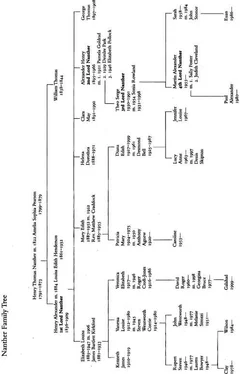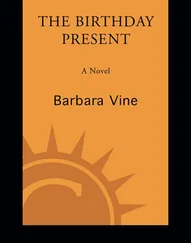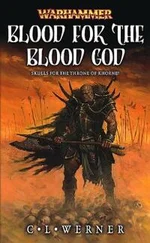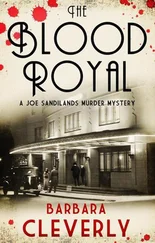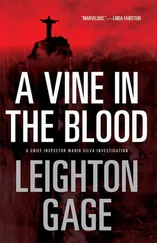Henry never mentions his dreams in the diary or the notebook. But it’s common for a once loved and now lost person to make an appearance in dreams, promising to come back or denying that he or she has ever been away. So as I put all these papers back into the appropriate files and boxes I ask myself if Henry ever dreamed of Hamilton, of Hamilton as he was or as he might be metamorphosed into a woman or even of the two of them eventually sharing a home, two ageing medical bachelors. But more likely he pictured the storm raging outside the window, the bridge splitting and collapsing and the train breaking and falling in flames to its fate under the waters of the firth.
6
Jude says shrewdly that I may find some big sins when I learn more about Henry’s private life. The worst I’m likely to come across, I tell her, is another Jimmy Ashworth turning up after his marriage to Edith Henderson. A petty sin, a grubby one. I go downstairs and cut Mrs Caspar Raven’s picture out of the Sargent calendar. Jude and I look at it together, admiring the way Sargent could paint flesh, giving it that pearly luminosity, and Jude says Goya did the same thing in The Naked Maja . Taking my second long look at Olivia Batho Raven, trying to find a trace of resemblance to her grandson, Stanley Farrow, I see something spoilt and fretful in her face along with the imperiousness. And I think of some French count or other whose mistress threw her glove into the lion’s den, challenging him to pick it up. This awful feat he performed, whereupon the King of France said, according to Leigh Hunt, ‘No love but vanity asks love a task like this.’
Mrs Raven was the kind of woman who threw her glove through the bars of the cage and took away her favours if men didn’t brave the lion to rescue it. But her husband was the kind of man who’d throw her to the lion if she spoke to him like that. And, remembering what Lord Farrow told me, as I take the calendar page into my study and put it into Henry File I, I ask myself what sort of a life she must have led Caspar and he her. But what sort of life does any husband lead a wife and wife a husband?
*
I’ve never read about this or heard anyone say it, but I do wonder how many men in my peculiar position feel the way I do. It’s been growing for some time now, the feeling, to put it bluntly, that I’m wanted only as a sperm provider. Although it’s never been voiced, it’s there, real in my mind, and I’m pretty sure real and urgent in Jude’s. Her ardour, if that’s the word, happens to be strongest on those vital days in the middle of the month, on each one of those days. There’s no longer any spontaneity, but a calculated and I think simulated urgency. If I instigate our lovemaking there’s something unreal about her ardent response. I never get a ‘no’ or even a hesitation. Sometimes I feel like a fertility machine, to be switched on as often as possible. If I were eighteen I think this might be acceptable, but I’m not and it isn’t. And there are times now when if I don’t actually say no, I hesitate. A fear is taking root that I’ll become impotent.
And that makes it all the more strange that I have an erotic dream. I haven’t had one for years. If this were a matter for joking one might say I haven’t needed to with my passionate – if that’s the right word – bed companion. But I have one tonight, in the small hours. It’s about Olivia Batho and, strangely enough, her sister Constance, and Jimmy Ashworth. I’m Henry, I think, very correct in frock coat and silk hat, and they’re taking part in one of those tableaux vivants that were the Victorian equivalent of shows in strip clubs. They’re the Three Graces, naked and all looking like each other and like Jude. I wake up and turn and reach for Jude. She’s deeply asleep and she doesn’t want me. In sleep her contrived passion has gone away somewhere and her unconscious mind rules, the part of her that demonstrates what she really wants – or doesn’t want. She even murmurs crossly, ‘No, no,’ but I’m just as insistent with my urgent, ‘Yes, yes’ and she gives way with a pettish, still half asleep, ‘Oh, all right.’ This must be the first time for a year I’ve really wanted sex, really wanted, that is, what lovemaking should be, a free and spontaneous impulse. Only it’s not that for her and when it’s all over, which happens much more quickly than it should, I’m afraid – and I’m ashamed of myself later – I’ m exultant that I got my way for once.
One thing’s for sure. I’m pretty certain it won’t happen like that again.
Henry wrote his first book in 1869 when he was thirty-three. He called his book Diseases of the Blood and subtitled it Haemophilia in Europe and America . At that time medical opinion was that haemophilia had only recently become known. This was true, but it isn’t to say that haemophilia wasn’t happening. As far as is known men have been ‘bleeders’ and women carriers since the beginning of time. Diseases of the Blood was probably instrumental in moving the Royal College of Physicians to recognize haemophilia by name, which it did in the mid-eighteen seventies.
Haemophilia is a condition characterized by a chronic liability to immoderate haemorrhage. Certain clotting factors are absent from the blood of sufferers or are in low supply. The haemophilia gene is carried by females on one of their X chromosomes and that’s why, today, the disease is called an X-linked condition. A carrier has one X chromosome with a normal gene and one X with a defective gene. Therefore there’s a 50 per cent chance of each of her male children having haemophilia and a 50 per cent chance she’ll pass on the defective gene to her female children, which means each of her daughters has a 50 per cent chance of also being a carrier. Boys born to a haemophilic father and a non-carrier mother won’t have the disease because, in order to be male at all they must have his Y chromosome, but all daughters born to haemophilic men will be carriers because in order to be female they must have his X chromosome. Most female carriers have no health problems related to the gene they carry but others suffer excessive menstrual bleeding, and copious bleeding after surgery or dental work and in childbirth.
Some of this was known in the later decades of the nineteenth century but nothing, of course, about genes or chromosomes. Nor was the cause of haemophilia known, so there was no effective treatment. What Henry did was describe all the cases documented or hinted at in medical and non-medical literature during the centuries of ignorance. He mentions Judaism’s Tractate Jebamoth in which the story is told of the four sisters living in Zipporah. The first had her baby son circumcised; the clotting factor being absent in his blood, he bled to death. Infant sons of the second and third sisters met the same fate. When the fourth sister had a son she went for advice to the Rabbi Simon ben Gamaliel and he ordered that her son was not to be circumcised. Since Gamaliel lived in the second century AD, Henry claimed that this was the oldest known reference to the disease. He writes next of Maimonides’ ruling that a boy was not to be circumcised if his two brothers by the same mother but by different fathers had died after the operation, though Henry of course knew by then that the condition of their fathers could make no difference.
He treats in the book of other isolated recorded examples, quoting the Al-tasrif of Alsaharavius, the greatest surgical writer of the Moorish period. There Alsaharavius writes of a village in Spain where men who were wounded suffered an uncontrollable haemorrhage. Boys whose gums were rubbed too harshly had also been known to bleed to death. In 1539 Alexander Benedictus described the case of a barber who haemorrhaged to death when he accidentally cut his nose with a pair of scissors. Another was that of a rare instance of the boy who at birth bled from the umbilicus. Henry comes to the nineteenth century and refers to Dr John C. Otto, a physician of Philadelphia and his An Account of a Haemorrhagic Disposition Existing in Certain Families , published in 1803. He lays before the reader ‘Nasse’s Law’, the assertion of Christian Friedrich Nasse, Professor of Medicine at Bonn, that males alone are the subject of haemophilia and females alone the transmitters, but adds the discovery he may have made himself but was probably made by some other, that the daughters of a male haemophiliac are always carriers. These principles inform Diseases of the Blood , a tome eight hundred pages long, packed with pedigrees, engraved maps of Swiss Cantons and New England counties, genealogical tables in which subjects are marked in black rings and carriers in white squares, and, of course, a learned, detailed, meticulous text that Henry evidently saw no reason to make accessible, still less interesting, to the layman. It is as dry as dust. I don’t know how I managed to grind my way through it. Difficult though it was, the medical profession liked it and it started Henry on the road to fame.
Читать дальше
